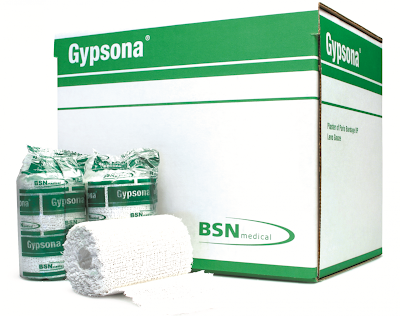Plaster is an adaptable material that has been commonly used since time immemorial. Therefore, many traditional as well as contemporary works owe their existence to the ever-versatile plaster!
Plaster is a simple powder made of gypsum, sand and lime. Simply adding water to the material will form a paste that can be used in many different ways. The very first thought is obviously in construction works, not just for plastering walls but also to create frescoes and other reliefs.
In direct contrast to this are the plaster bandages which are used to form shell molds that will reinforce the original mold and help it retain its shape. Then there are other varied uses like making original sculptures and other decorative elements apart from casting in molds to make replica casts and even life casts. Plaster can be carved after drying, which further increases its utility.
In direct contrast to this are the plaster bandages which are used to form shell molds that will reinforce the original mold and help it retain its shape. Then there are other varied uses like making original sculptures and other decorative elements apart from casting in molds to make replica casts and even life casts. Plaster can be carved after drying, which further increases its utility.
Getting into plaster casting
Making a plaster cast is as simple a task as anything can be. All it requires is mixing the plaster powder with water to get the desired consistency before pouring it into the mold. Once it has hardened, the mold can be removed to reveal an exact replica of the original model. What’s more, numerous replicas can be made in quick succession in the same mold as the plaster will set and cure pretty quickly.
However, alginate body molds tend to shrink on exposure to air and cannot be reused. Moreover, plaster also tends to give off heat while curing and therefore, should be used with caution.
Getting into plaster shell molds
Using plaster of Paris bandages to form a mother mold is another story altogether. This is nothing but thin gauze that has been impregnated with plaster powder and is available in the form of rolls. The usual method is to cut long strips of the gauze before wetting them with water. Gently squeeze out the excess water and apply it over the mold to form a covering. The bandages should be applied in an overlapping manner with each layer being smoothed out with a gentle hand to ensure that air does not get trapped in between and warp the mother mold.
Plaster gauze is generally used with alginate, silicone rubber and latex rubber molds. As these molds are flexible; they tend to flop over during the casting process which can distort the casting. The plaster in the gauze will harden to form a rigid covering which encases the flexible mold and helps it retain its shape.
In sum, plaster is a relatively inexpensive material. It is easy to use and does not take much time to set, thus giving quick results. The beauty of this simple material is that it has been an intrinsic part of many artistic movements of the olden days and yet manages to retain its utility till date! In fact, there’s so much more that can be done with plaster – the only limit is the imagination for sure!





0 Response to "Creating, Recreating and Reinforcing with Plaster"
Post a Comment